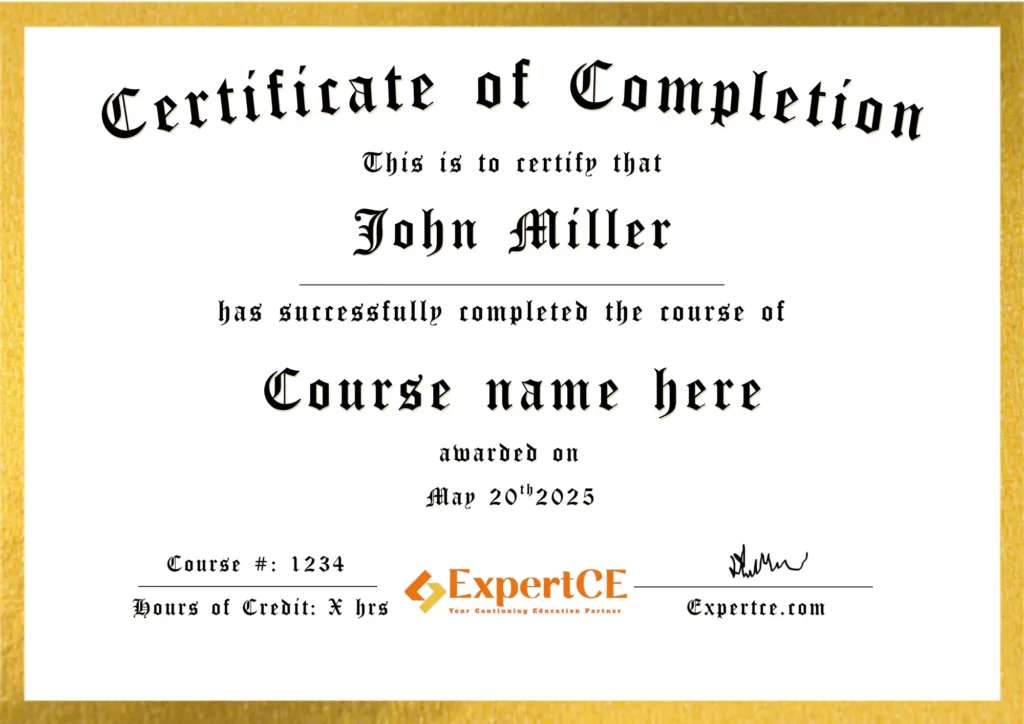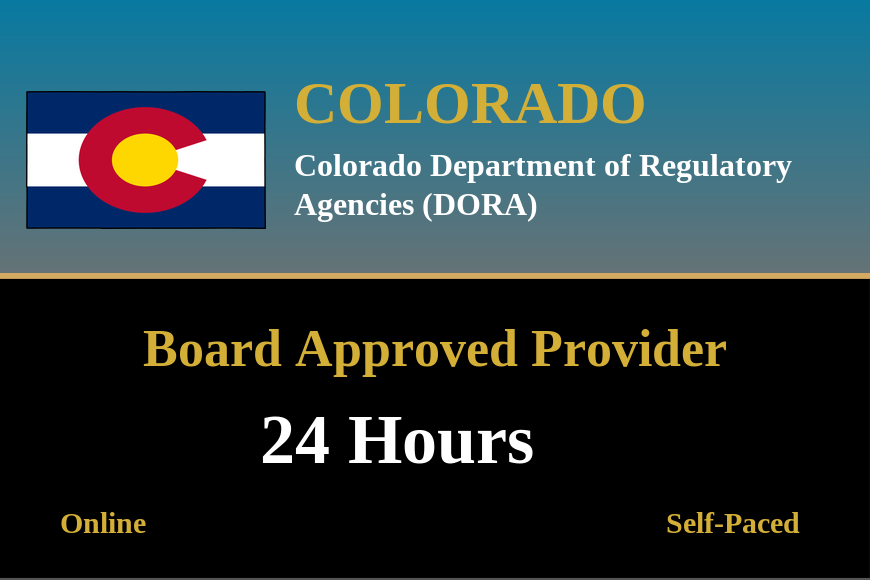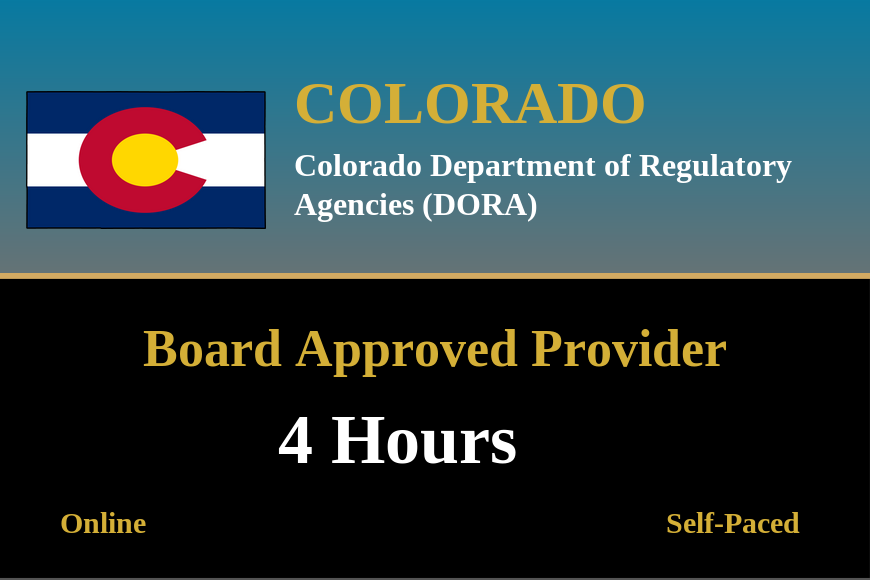CE Requirement – Colorado
The complete requirements and renewal steps are listed below
Colorado Electrician Continuing Education Requirements: All Colorado-licensed Residential Wireman, Journeyman, and Master Electricians must complete 24 hours of Continuing Education (CE) during each three-year license period before they may renew their license. This requirement does not apply to the first renewal of a license that was obtained by passing an examination during that license cycle.
Online Courses Approved for Colorado
Frequently Asked Questions (FAQ)
All Colorado-licensed Residential Wireman, Journeyman, and Master Electricians must complete 24 hours of Continuing Education (CE) during each three-year license period. ExpertCE.com offers a complete 24-hour package to meet your renewal requirements.
Yes, our courses are designed to meet all the requirements for CE credit as set by the Colorado State Electrical Board. You can fulfill your entire 24-hour requirement with our CE courses. Get started today at ExpertCE.com.
The Colorado Electrical Board requires your 24 CE hours to be selected from Core Competencies, including Grounding and Bonding, National Electrical Code (NEC) Changes, Wiring Methods, Theory and Calculations, and Safety related to the electrical industry. A minimum of four hours must be on NEC changes. ExpertCE.com offers course packages that cover all the required topics.
The license renewal deadline for Colorado electricians is September 30th at the end of each three-year cycle. Don't wait until the last minute! All our courses are online and self-paced, so you can start anytime at ExpertCE.com.
The terms can be confusing, but the Colorado Electrical Board specifically requires 24 Continuing Education (CE) hours. The term CEU (Continuing Education Unit) is a standardized unit where one CEU equals 10 contact hours. Therefore, the 24 CE hours required by Colorado is equivalent to 2.4 CEUs. ExpertCE.com provides courses in the required 24-hour format to ensure you meet the state's mandate.
Sample Certificate
Download instantly after completing your course.




